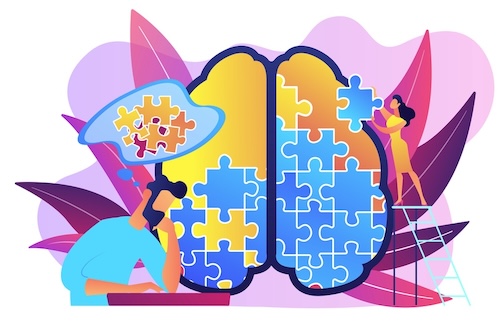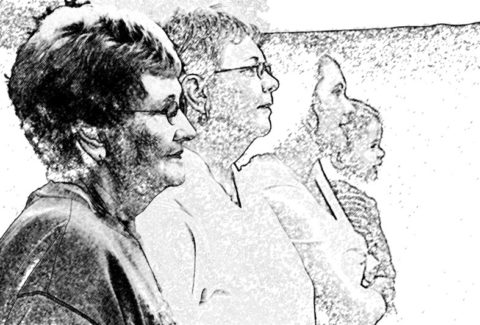The Foundational Principles of Gestalt Therapy
Introduction:
Gestalt Therapy[1] stands as a beacon of holistic healing, inviting individuals to embrace the fullness of their being and engage with life in the present moment. Rooted in the philosophy of existentialism[2] and humanistic psychology[3], Gestalt Therapy offers a dynamic approach to personal growth and self-discovery. In this article, we embark on a journey through the foundational principles of Gestalt Therapy, exploring its core concepts, therapeutic techniques, and transformative potential.
The Here and Now:
At the heart of Gestalt Therapy lies a deep reverence for the present moment.[4] Gestalt therapists guide individuals to become fully aware of their thoughts, feelings, and bodily sensations as they arise in the here and now. By cultivating mindfulness and presence, individuals are empowered to engage authentically with their inner experiences and the world around them. Through the lens of the present moment, Gestalt Therapy fosters self-awareness, spontaneity, and the capacity for meaningful action.[5]
The Gestalt Cycle of Experience:
Central to Gestalt Therapy is the Gestalt Cycle of Experience[6], which encompasses the ongoing process of awareness, contact, and resolution. Individuals move through this cycle as they become aware of their needs, make contact with themselves and others, and seek resolution or closure. Gestalt therapists facilitate this process by encouraging individuals to explore their unfinished business, unresolved emotions, and unmet needs, thereby fostering greater integration and wholeness.
Holistic Awareness:
Gestalt Therapy emphasizes the interconnectedness of mind, body, and spirit, viewing individuals as holistic beings embedded within larger systems and contexts.[7] Through experiential techniques such as the empty chair dialogue, role-playing, and body awareness exercises, individuals explore the various dimensions of their being and the interplay between thoughts, emotions, sensations, and behaviors. By embracing holistic awareness, Gestalt Therapy facilitates deeper insight, self-acceptance, and personal transformation.
The Paradoxical Theory of Change:
In Gestalt Therapy, change emerges from acceptance rather than resistance. The paradoxical theory of change[8] suggests that individuals are more likely to transform when they fully embrace who they are in the present moment, rather than striving to be someone they are not. Gestalt therapists encourage individuals to lean into their discomfort, confront their fears, and explore the underlying meaning of their symptoms or struggles. Through this process of acceptance and integration, individuals discover new possibilities for growth and self-expression.
The Therapeutic Relationship:
Central to Gestalt Therapy is the therapeutic relationship, characterized by authenticity, empathy, and mutual respect. Gestalt therapists serve as compassionate guides, accompanying individuals on their journey of self-discovery and transformation. Through genuine dialogue, nonverbal communication, and creative experimentation, therapists create a safe and supportive environment for individuals to explore their inner landscape, confront their obstacles, and reclaim their inherent capacity for healing and growth.[9]
Conclusion:
As we journey through the foundational principles of Gestalt Therapy, we are reminded of its profound capacity to awaken individuals to the richness of their inner world and the infinite possibilities for growth and self-expression. From the here and now to the Gestalt cycle of experience, holistic awareness, and the paradoxical theory of change, Gestalt Therapy offers a holistic framework for personal transformation and healing. By embracing wholeness and honoring the interconnectedness of mind, body, and spirit, Gestalt Therapy invites individuals to step into the fullness of their being and embark on a journey of self-discovery and empowerment.
Interested in exploring Gestalt Therapy further? Find out if our upcoming Gestalt Therapy Virtual Conference, scheduled for May 10, 2024 from 9-1pm (EDT), is the perfect match for you. Click here to discover more.
[1] Brownell, Philip. Gestalt Therapy: A guide to contemporary practice. Springer Publishing Company, 2010.
[2] Boris, Georges Daniel Janja Bloc, Anna Karynne Melo, and Virginia Moreira. “Influence of phenomenology and existentialism on Gestalt Therapy.” Estudos de Psicologia (Campinas) 34 (2017): 476-486.
[3] Elliott, Robert. “The effectiveness of humanistic therapies: A meta-analysis.” (2002).
[4] Masquelier, Gonzague. Gestalt Therapy: Living creatively today. CRC Press, 2015.
[5] Nunes, Andrea Loss, and Mariane Lima de Souza. “MINDFULNESS AND GESTALT-THERAPY MEDITATION: A POSSIBLE ENCOUNTER FOR HUMAN HEALTH.”
[6] Russell, Gayle, Dip GT Grad, and G. T. Masters. “The Gestalt Cycle of Experience: A Creative Tool for Growth.” Gestalt Review 10.3 (2006): 260-270.
[7] Stevenson, Herb. “Awareness and emergence: A gestalt approach to global diversity and inclusion.” Gestalt Review 20.2 (2016): 162-187.
[8] Roubal, Jan, and Gianni Francesetti. “Field theory in contemporary Gestalt Therapy part two: paradoxical theory of change reconsidered.” Gestalt Review 26.1 (2022): 1-33.
[9] Böhm, Angelika. “Basic principles for therapeutic relationship and practice in gestalt theoretical psychotherapy.” Gestalt Theory 43.1 (2021): 69-86.









